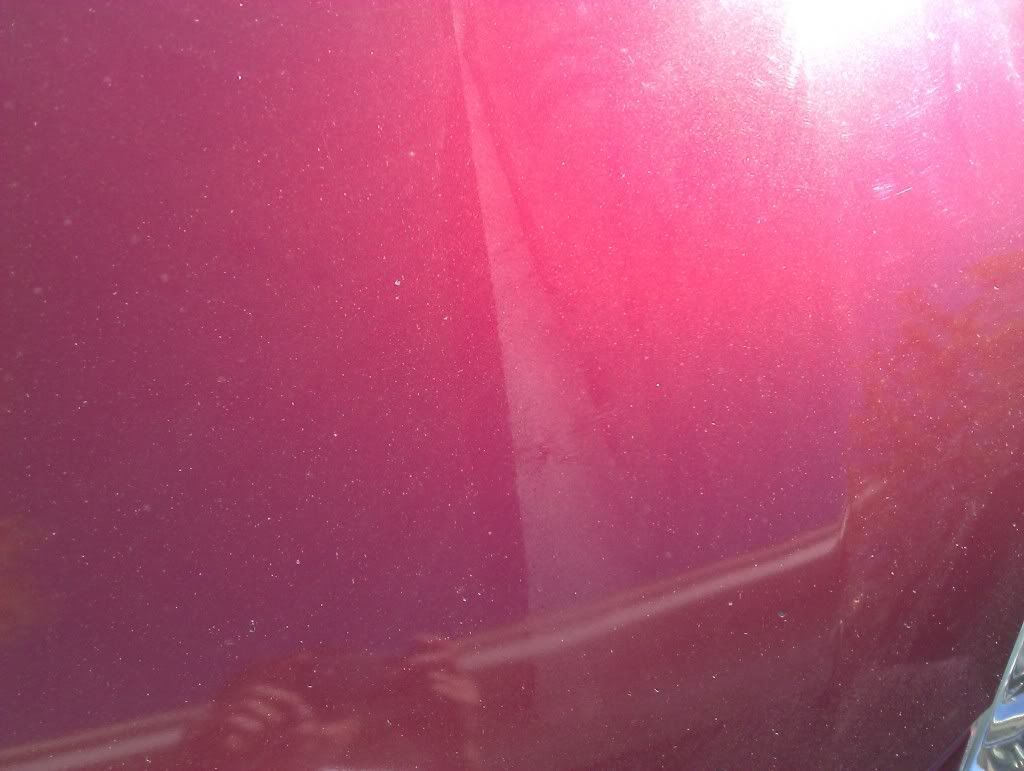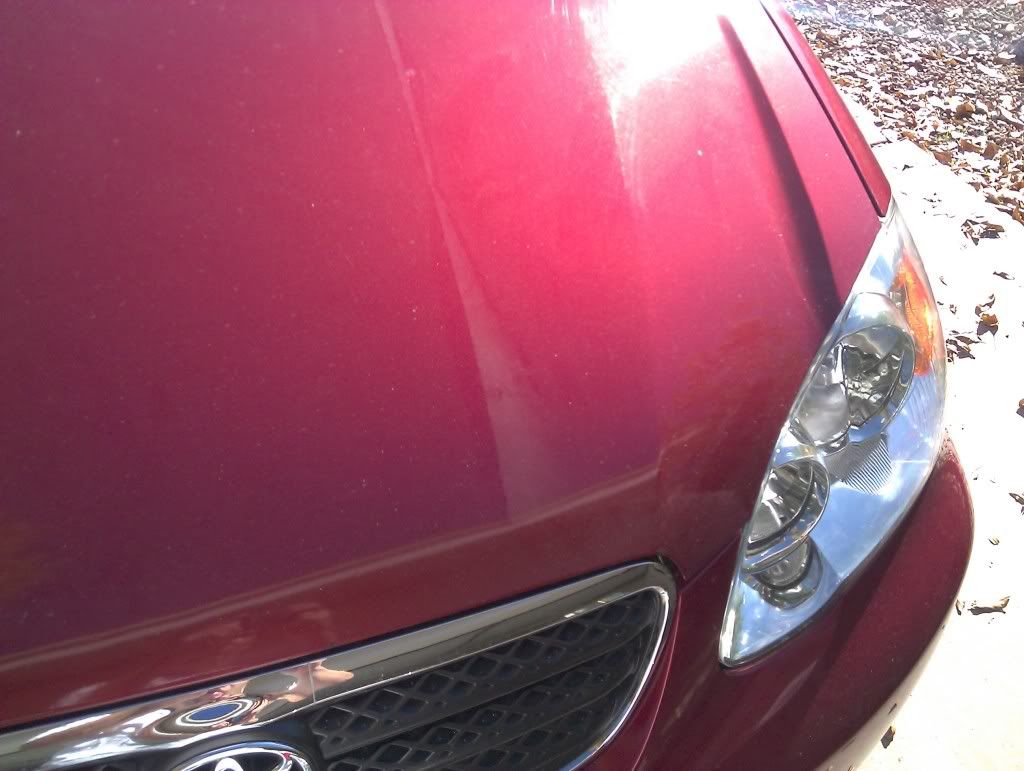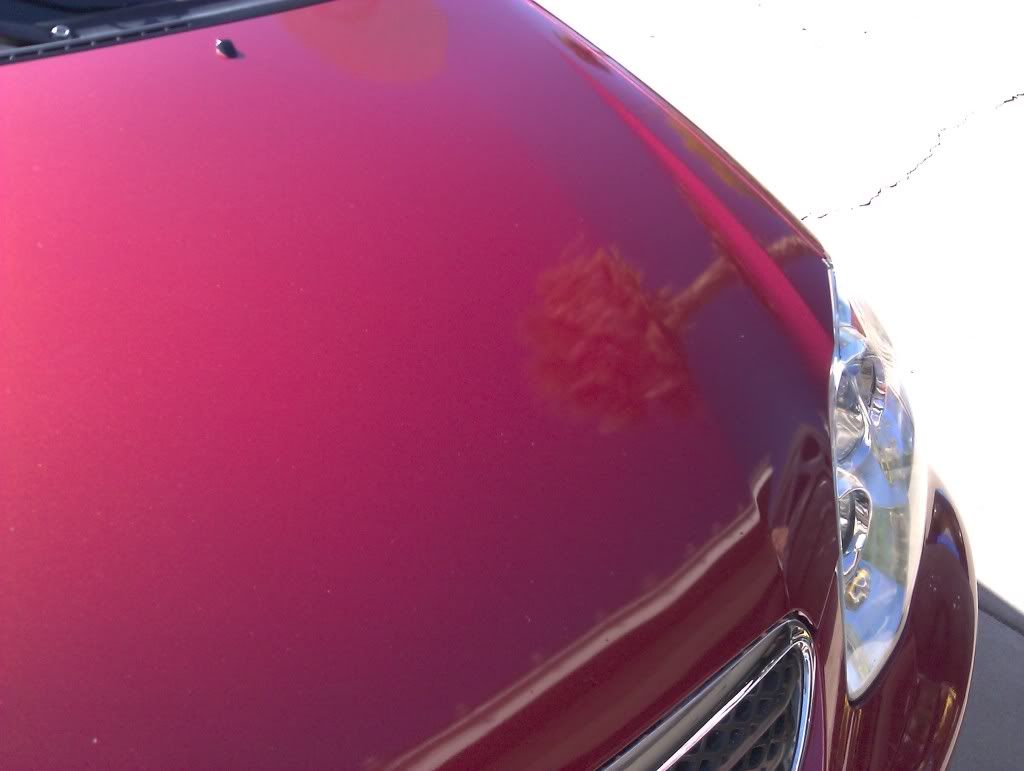BIOLINK
Icon Detailing
I got the idea for this thread reading this thread:
http://www.autopiaforums.com/forums/polishing-rotary-polisher/30811-rotary-not-rotary.html
I did a headlight correction on this red Corolla a few weeks back and noticed that the car had been repainted in several spots. We'll just say it's a poor job at best. One of the worst spots on the car is a tape line that was visible on the hood Note the overspray on the outside of the tape line. Well I wanted to see what I could do with it while being gentle with the lower quality paint the car was resprayed with. The tape line ran the entire length of the hood and wraps down by the headlight. The overspray was heaviest there, although it is hard to see.


I first tried clay. It did not remove the overspray, but it did remove a piece of paint. :wall At this point I am trying to avoid using the rotary and rocks in a bottle. (be gentle)
I reached for the PC and a white LC CCS pad. I first tried (it worked) Meg Ult Compound. I love this stuff. It has a bit of bite, but I did not use a super aggressive pad and kept polishing times short with little pressure. The results were amazing, it came off in just a few minutes. I followed up with D151 and called it good. Here are a few after shots.


So if you find yourself asking "rotary or not?", don't automatically think you cant clean something up with the PC you already own.
And to totally sell out and shill away for Ultimate Compound, here is the link to buy it
http://www.autopia-carcare.com/meguiars-ultimate-compound.html
Thanks for reading.
http://www.autopiaforums.com/forums/polishing-rotary-polisher/30811-rotary-not-rotary.html
I did a headlight correction on this red Corolla a few weeks back and noticed that the car had been repainted in several spots. We'll just say it's a poor job at best. One of the worst spots on the car is a tape line that was visible on the hood Note the overspray on the outside of the tape line. Well I wanted to see what I could do with it while being gentle with the lower quality paint the car was resprayed with. The tape line ran the entire length of the hood and wraps down by the headlight. The overspray was heaviest there, although it is hard to see.


I first tried clay. It did not remove the overspray, but it did remove a piece of paint. :wall At this point I am trying to avoid using the rotary and rocks in a bottle. (be gentle)
I reached for the PC and a white LC CCS pad. I first tried (it worked) Meg Ult Compound. I love this stuff. It has a bit of bite, but I did not use a super aggressive pad and kept polishing times short with little pressure. The results were amazing, it came off in just a few minutes. I followed up with D151 and called it good. Here are a few after shots.


So if you find yourself asking "rotary or not?", don't automatically think you cant clean something up with the PC you already own.
And to totally sell out and shill away for Ultimate Compound, here is the link to buy it
http://www.autopia-carcare.com/meguiars-ultimate-compound.html
Thanks for reading.
